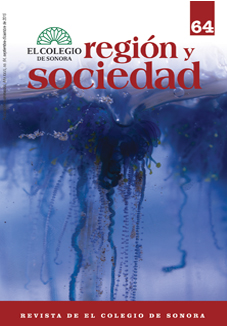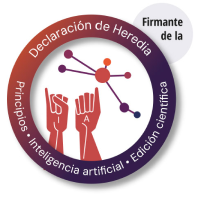 |
 |
 |
 |
 |
 |
 |
 |
 |
 |
 |
 |
Abstract
A survey was applied to 11 urban community sectors and one representative population sample from the city of Tijuana regarding border employment in cities within San Diego County, in order to study commuting phenomena via the main border ports of entry (BPE). It was concluded that most employees reside near the BPE, and the majority of workplaces are concentrated in five cities close to the border. The network commuters use to access their workplaces is efficient and includes pedestrians who use the collective transportation systems on the U. S. side to reach workplaces close to the border, to commuters who use vehicles to get to workplaces located farther away.
References
Alegría, Tito. 2004. Modelo estructural del trabajo trasfronterizo. En Fronteras en América del Norte. Estudios multidisciplinaras, coordinado por A. Mercado y E. Gutiérrez, 417-438. México: Centro de Investigaciones sobre América del Norte de la Universidad Nacional Autónoma de México.
Anas, Alex, Richard Arnott y Kenneth A. Small. 1997. Urban spatial structure. Berkeley: University of California.
Arreola, Daniel D. y James R. Curtis. 1993. The Mexican border cities: landscape anatomy and place personality. Tucson: University of Arizona Press.
California Department of Transportation. 2008. State route 905/125 interchange at Otay Mesa port of entry, Transportation Border Congestion Relief Program.
Cervero, Robert y M. Duncan. 2002. Transit's value-added effects light and commuter rail services and commercial land values. Transportation Research Record (1805): 8-15.
Church, Andrew y Peter Reid. 1999. Cross-border co-operation, institutionalization and political space across the English Channel. Regional Studies (7): 643-655.
Clark, William y Marianne Kuijpers-Linde. 1994. Commuting in restructuring urban regions. Urban Studies (31): 465-484.
Dillman, Daniel. 1983. Border urbanization. En Borderlands sourcebook:a guide to the literature on northern Mexico and the American southwest, coordinado por E. Stoddard, R. N. Ellwyn, R. Nostrand y J. West, 237-244. Estados Unidos: University of Oklahoma Press.
FHWA. 2013. Highway functional classification concepts, criteria and procedures.
García-Palomares, Juan. 2007. Movilidad laboral en la comunidad de Madrid. Tesis doctoral. Universidad Complutense de Madrid.
García-Palomares, Juan y Javier Gutiérrez-Puebla. 2007. Pautas de la movilidad en el área metropolitana de Madrid. Cuadernos de Geografía (81): 7-29.
Gordon, Peter, Ajay Kumar y Harry Richardson. 1989. The influence of metropolitan spatial structure on commuting time. Journal of Urban Economics (26): 138-151.
Herzog, Lawrence. 2009. Global crossroads. Planning and infrastructure for the California-Baja California border region. San Diego: Trans-Border Institute.
Herzog, Lawrence. 1990. Where North meets South. Cities, space and politics on the U.S. Mexico border. Austin: Center for Mexican American Studies, University of Texas Press.
Hoffman, Peter R. 1983. The internal structure of Mexican border cities. Tesis doctoral. Universidad de California.
INEGI. 2010. Censo de población y vivienda 2010. Aguascalientes: http://www.inegi.org.mx/inegi/contenidos/espanol/prensa/comunicados/rdcpyv10.asp (3 de marzo de 2014).
Long, Jason y Joseph Fernie. 2007. Labor mobility. En Oxford Encyclopedia of Economic History, coordinado por Joel Mokyr. Nueva York: Oxford University Press.
Mungaray-Moctezuma, Alejandro y José María Ureña. 2014. Red de caminos del espacio trasfronterizo Tijuana-San Diego y desplazamientos por fines laborales de su población. México: M. A. Porrúa, UABC.
Mungaray-Moctezuma, Alejandro, José Joaquín Sánchez y José María Ureña. 2010. Methodologie pour l' analyse des reseaux routiers de la ville transfrontaliere du Mexique et les Etats-Units: Tijuana-San Diego et Mexicali- Imperial Valley. Revue Mosella (32): 1-4.
Nassa, Dabié. 2008. Dynamisme d'une ville stimulé par la frontiére: l'exemple de Ouangolodougou en Cote d'Ivore. Revue Ivoirienne des Lettres, Arts et Sciences Humaines (11).
Pick, James, Nanda Viswanathan y James Hettrick. 2001. The U. S.Mexican borderlands region: a binational spatial analysis. The Social Science Journal (38): 567-595.
Raffestin, Claude. 1974. Eléments pour une problématique des régions frontaliéres. Espace Géographique (1): 12-18.
Reitel, Bernard y Alexandre Moine. 2005. Entre Rhin et jura, des espaces transrontaliers ou emergent des dissymetries. Universites de Haute-Alsace et de Franche-Comte.
SANDAG. 2010. Fast facts, demographics and other data, resources: http://www.sandag.org/resources/demographics_and_other_data/demographics/fastfacts/index.asp (20 de marzo 2014).
SCT. 2013. Normativa para la infraestructura del trasporte. México: SCT: www.normas.imt.mx (25 de febrero de 2014).
SCT. 2000. Manual de diseño para la infraestructura de trasporte de los puertos fronterizos. México: SCT.
SEDECO. 2013. 6to. Informe de gobierno. Comparecencia de sedeco ante la XXI Legislatura del Estado de Baja California. Mexicali: SEDECO.
Ureña, José María. 1999. Ingeniería civil o ingeniería del territorio. Cuenca: Universidad de Castilla-La Mancha.
Ureña, José María y Cecilia Ribalaygua. 2004. Le réseau ferroviaire a grande vitesse espagnol: état actuel d'avancement et appropriation par les villes desservies. Transports Urbains (106) : 3-10.
Ureña, José María, José María Coronado y Fernando Escobedo. 2001. Criterios territoriales para el trazado de vías de comunicación en valles lineales. En XIV Congreso mundial de carreteras de la Federación Internacional de Carreteras, París.
U.S. Census. 2010. United States Census: www.census.gov/2010 census/
U.S. Census. 1990. Selected historical decennial census population and housing counts: www.census.gov/population/www/censusdata/hiscendata.html (13 de marzo de 2014).
U.S. DOT. 2013. Research and innovative technology administration: www.rita.dot.gov/bts (27 de marzo de 2014).
XX Ayuntamiento de Tijuana 2010-2013 (XX Tijuana). 2013. Ciudad: www.tijuana.gob.mx/ciudad/ (25 de febrero de 2014).

This work is licensed under a Creative Commons Attribution-NonCommercial 4.0 International License.
Copyright (c) 2017 Alejandro Mungaray Moctezuma, José María Ureña Francés






